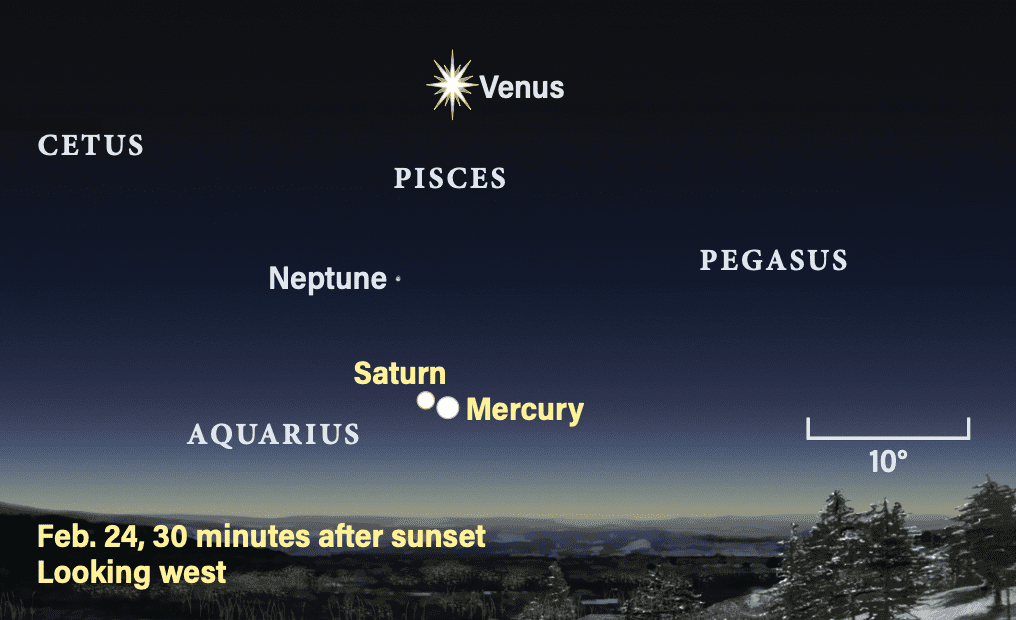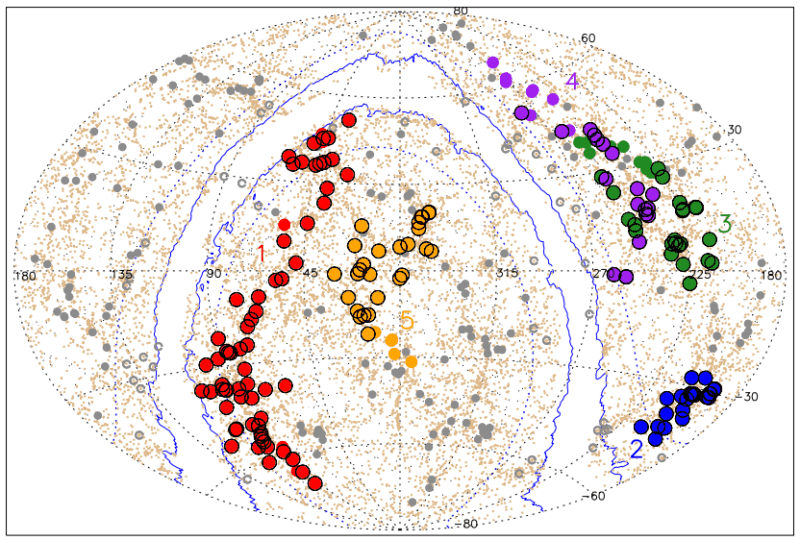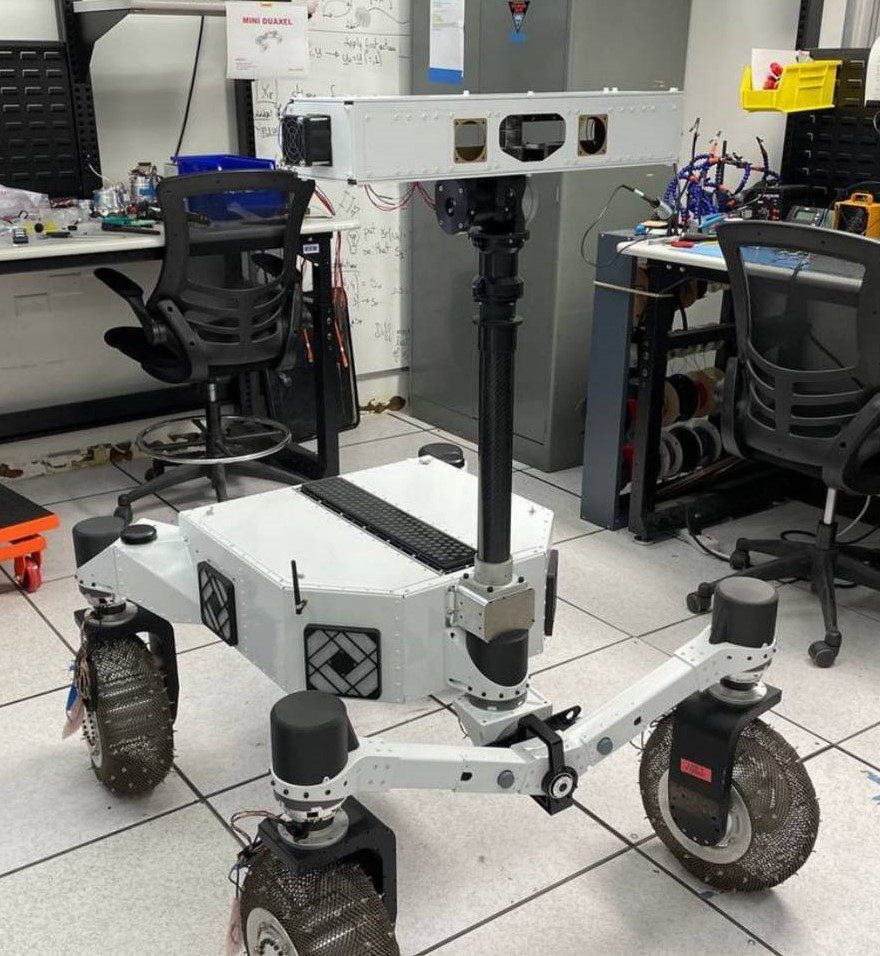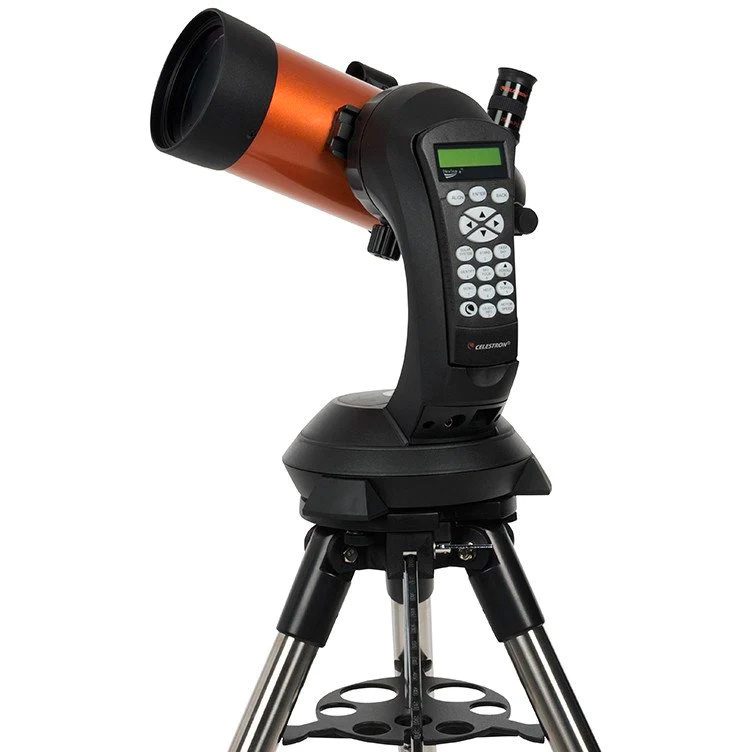The Sky This Week from February 21 to 28: Saturn and Mercury meet
Mercury and Saturn stand side by side in the early-evening sky near the end of February. Note that Neptune is not visible to the naked eye. Credit: Astronomy: Roen Kelly Friday, February 21The Moon passes 0.4° south of the bright red giant Antares in Scorpius this morning at 4 A.M. EST. The pair is visible … Read more




